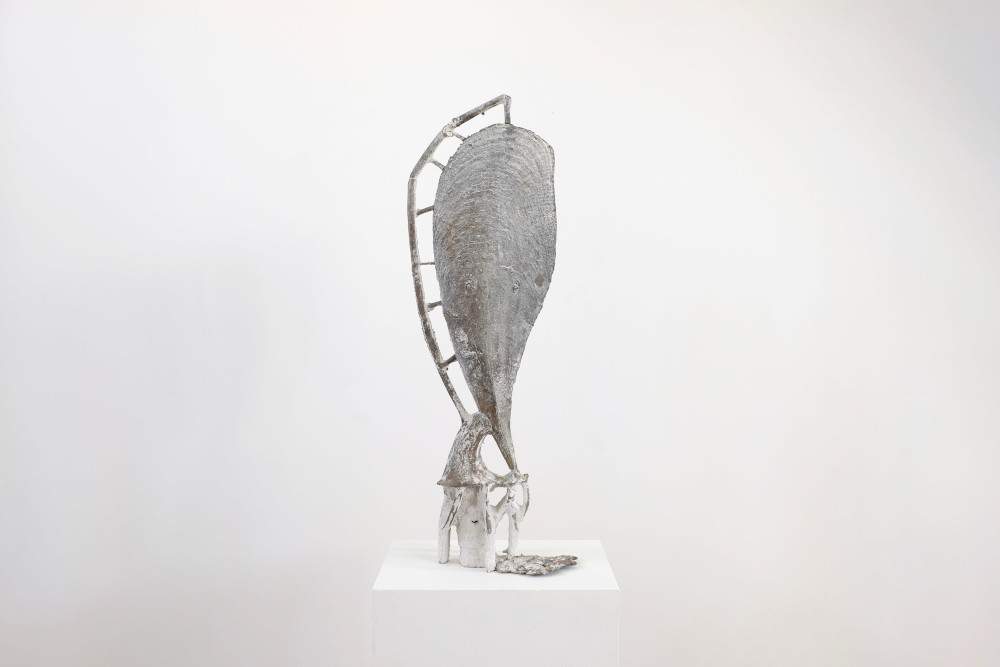Giorgio Andreotta Calò (Venice, 1979) is the winner of the first edition of the ACP Green Art Award, the prize founded in 2021 by ACP - Palazzo Franchetti and the company Art Capital Partners, under the patronage of MITE - Ministry of Ecological Transition, aimed at developing proposals on the urgent topic of planet preservation and renewable energy. The prize is aimed at an artist or a collective of artists who, by addressing the themes of sustainability, make themselves a means of disseminating issues related to clean water and sanitation, climate change, affordable and clean energy, sustainable cities and communities, responsible consumption and production, climate action, life below water, life on land: all goals included in the United Nations 2030 Agenda for Sustainable Development.
The winner of this first edition, selected by a jury of experts, is Giorgio Andreotta Calò, chosen for his ability to manifest in his artistic research, the complex dialectic between anthropic and natural elements, the coexistence between man and nature. The artist is participating with three of his iconic works, Pinna Nobilis, Carotaggio, Untitled (in girum imus nocte). The most voted will enter the permanent collection of ACP - Art Capital Partners Palazzo Franchetti. The public, a special juror, will be able to admire them from July 5 to November 27, 2022 in a dedicated exhibition inside ACP - Palazzo Franchetti. The winning work will be voted by the jury and the public and they can click their preference on www.acp-palazzofranchetti.com inside the dedicated viewing room until June 30, 2022. The award ceremony will take place on Tuesday, July 5, and there will also be a panel discussion open to the public on the themes and work of Giorgio Andreotta Calò in which members of the jury will also participate.
One of the sculptures in the competition is Pinna No bilis made in bronze starting in 2014: it depicts a life-size specimen of Pinna Nobilis, a shell of the bivalve mollusk of the same name, the largest present in Mediterranean waters, whose survival is threatened by human activities. Next to the central body consisting of the shell, the metal casting channels and the mouthpiece are integral elements of the sculpture, traces of the lost-wax casting process and at the same time supporting elements of the work itself. The PinnaNobilis series includes various themes that run transversally through the artist’s research: the gaze on the landscape and in particular on the Venice lagoon, from which Andreotta Calò extracts some fragments and reworks them into objects with a strong evocative charge.
With the Carotaggi di Venezia (Cores of Venice), extracted starting in 2014 from the subsoil of the lagoon, several layers of material have been found including Caranto, a compact overconsolidated clay that constitutes what supports the foundations of the city of Venice. Several themes addressed by Calò can be found in these works: the representation of time, the mutability of matter and a reflection on the lagoon of Venice, whose elements subtracted from the landscape and reworked by the artist become objects that carry universal meanings.
Untitled (in girum imus nocte) is a sculpture made by the artist in 2016. The genesis of the work is linked to Calò’s time and research in Sulcis Iglesiente, southwestern Sardinia, starting in 2013. The wooden element from which the aluminum casting originates is used by miners in the film In girum imus nocte (2015) and in the action it documents, a nocturnal walk from Carbosulcis, the last active mine in Italy, to the island of Sant’Antioco. The work also alludes to the configuration of the stick evoking, according to a primordial meaning, the ritual dimension linked to the action of walking in the artist’s practice.
Giorgio Andreotta Calò, Pinna Nobilis (B ) (2015; Bronze, 80 x 30 x 10 cm) © ACP - Art Capital Partners | Giorgio Andreotta Calò Photo by Tor Jonsson
 |
| Green art: works by Giorgio Andreotta Calò awarded. One will enter the collection of Palazzo Franchetti |
Warning: the translation into English of the original Italian article was created using automatic tools. We undertake to review all articles, but we do not guarantee the total absence of inaccuracies in the translation due to the program. You can find the original by clicking on the ITA button. If you find any mistake,please contact us.